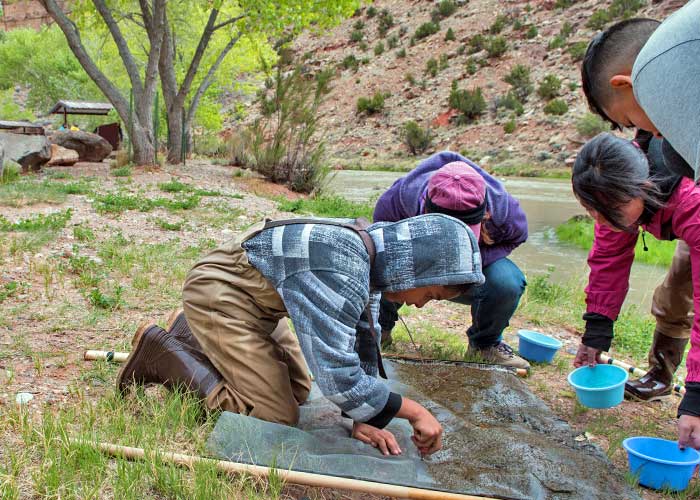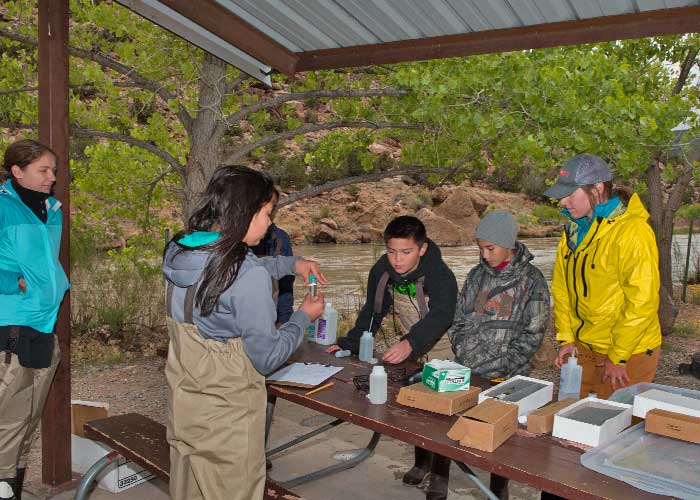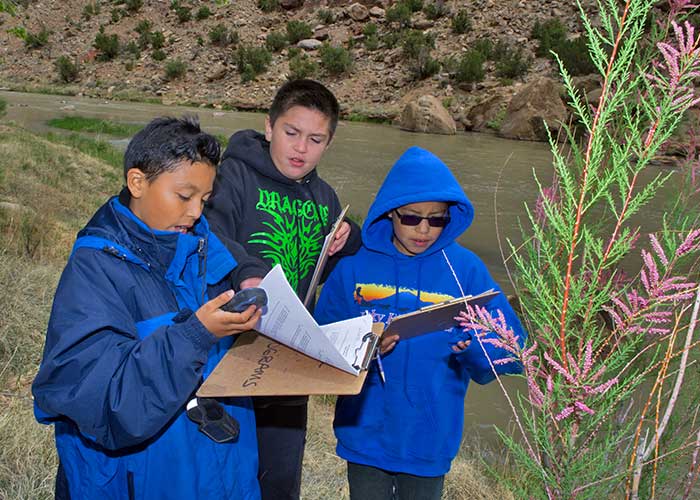Biology, chemistry, and physics are three core sciences and provide concepts that are important in understanding how ecosystems function and how animals interact with their environments. New Mexico Wildlife Center is making sure that students from the Española Valley are becoming better acquainted with these three sciences and spending time collecting their own data. Their data collection protocols are thorough enough that the data can be submitted to the Surface Water Quality Bureau at the New Mexico Environment Department. The lessons and data collection also help the students better understand the environment right in their backyard.

Española Valley students search for macroinvertebrates by the Rio Chama (Zen Mocarski).
New Mexico Wildlife Center staff meets with students twice a month either in the field or at the Wildlife Center in Española. They get the opportunity to experience by doing; activities are very hands on regardless of whether the students are outside collecting field data or inside discussing the structure of a cell and differences between plants and animals. They explore the natural world at all different scales, from understanding microscopic processes to discussing how animals behave and interact with their environment.

Española Valley students measure water quality on the Rio Chama (Zen Mocarski).

Española Valley students review key concepts, including the use of GPS and identifying non-native plants (Zen Mocarski).
This year, the Share with Wildlife program is helping to support these educational efforts. In May, Wildlife Center staff met with students to collect water quality data, including pH, water temperature, dissolved oxygen, turbidity, and conductivity, and review the key concepts covered during the past year. The students answered a number of questions, initially responding individually and then discussing or getting assistance from fellow students and Wildlife Center staff. The questions covered an impressive diversity of topics ranging from the molecular structure, and various properties, of water to identifying animal sign and species of plants. Some of the questions involved not only writing down answers but acting things out; for example, one question related to picking an animal found along the Rio Chama and acting out its behavior. These sorts of hands on review sessions help to reinforce learning by taking students back to the environment and context in which they were initially introduced to a particular concept. Later that day, students presented final projects that were intended to demonstrate how the different topics covered during the year were all interconnected. More information can be found on the New Mexico Wildlife Center’s education blog.
